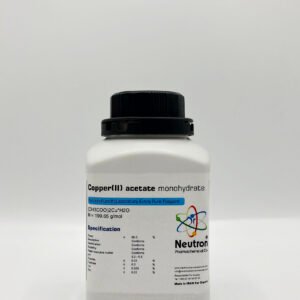Potassium hexacyanoferrate ii trihydrate
| Chemical formula | C6FeK4N6*3H2O |
| Molar mass | 422.39 g/mol |
| Bulk density | ~950 – 1050 kg/m3 |
| CAS number | 14459-95-1 |
| HS Code | 28372000 |
| EC number | 237-722-2 |
| Storage | Without limitation |
| SDS | available |
| R phrase | R 52/53 |
| S phrase | S 50.1-61 |
| Odour | odourless |
| Form | solid |
| Color | light yellow |
| p H | ~9.5 (100g/l 20 °C) |
| Solubility in water | 289 g/l (20°C) |
| Melting point | 70 °C |
| Thermal decomposition | 70 °C |
| Assay | ≥ | 99 | % |
| Description | Conforms | ||
| Identification | Conforms | ||
| Solubility | Conforms | ||
| Heavy metals | ≤ | 0.001 | % |
Potassium hexacyanoferrate(II) trihydrate is an inorganic coordination compound consisting of potassium and hexacyanoferrate(II) ions, commonly used in pigment production, chemical analysis, and as an anti-caking agent in salt.
🏭⚗️ Production
This compound is produced industrially by treating hydrogen cyanide with ferrous salts under alkaline conditions in the presence of potassium salts, followed by crystallization as the trihydrate. In laboratory settings, it can be synthesized by reacting ferrous sulfate with potassium cyanide or potassium carbonate under controlled conditions, then allowing the product to crystallize.
🔬 Properties
It appears as lemon-yellow monoclinic crystals, soluble in water but insoluble in alcohol. Its chemical formula is K₄[Fe(CN)₆]·3H₂O, with a molar mass of approximately 422.39 g/mol. It is stable under normal conditions, non-volatile, and non-hygroscopic. It does not release free cyanide under neutral or mildly acidic conditions.
🧪 Applications
Potassium hexacyanoferrate(II) trihydrate is used in the production of blue pigments (such as Prussian blue), in blueprinting, and as an anti-caking agent in table salt. It is also used in analytical chemistry to test for metal ions like iron(III).
⚠️ Safety
Despite containing cyanide ligands, this compound is considered low in toxicity because it does not readily release cyanide. However, it can produce toxic gases if strongly acidified or heated. It should be handled with basic protective equipment and stored in a cool, dry place away from acids.





